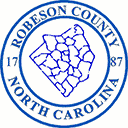Lessons Learned but More Work to Be Done
go.ncsu.edu/readext?877936
en Español / em Português
El inglés es el idioma de control de esta página. En la medida en que haya algún conflicto entre la traducción al inglés y la traducción, el inglés prevalece.
Al hacer clic en el enlace de traducción se activa un servicio de traducción gratuito para convertir la página al español. Al igual que con cualquier traducción por Internet, la conversión no es sensible al contexto y puede que no traduzca el texto en su significado original. NC State Extension no garantiza la exactitud del texto traducido. Por favor, tenga en cuenta que algunas aplicaciones y/o servicios pueden no funcionar como se espera cuando se traducen.
Português
Inglês é o idioma de controle desta página. Na medida que haja algum conflito entre o texto original em Inglês e a tradução, o Inglês prevalece.
Ao clicar no link de tradução, um serviço gratuito de tradução será ativado para converter a página para o Português. Como em qualquer tradução pela internet, a conversão não é sensivel ao contexto e pode não ocorrer a tradução para o significado orginal. O serviço de Extensão da Carolina do Norte (NC State Extension) não garante a exatidão do texto traduzido. Por favor, observe que algumas funções ou serviços podem não funcionar como esperado após a tradução.
English
English is the controlling language of this page. To the extent there is any conflict between the English text and the translation, English controls.
Clicking on the translation link activates a free translation service to convert the page to Spanish. As with any Internet translation, the conversion is not context-sensitive and may not translate the text to its original meaning. NC State Extension does not guarantee the accuracy of the translated text. Please note that some applications and/or services may not function as expected when translated.
Collapse ▲I recently returned from a national conference in West Palm Beach, Florida. A highlight of the trip was spending a day touring the Everglades Agriculture Area (EAA). It was fascinating to learn Palm Beach County is Florida’s top agriculture-producing county in the state. As the wealthiest county, filled with expensive real estate and golf courses, I never realized the vast production of sugarcane, rice, vegetables, and sod on the region’s unique, highly-productive muck soils. It was also interesting to learn the EAA was established by the state legislature to serve as a basis for environmental protection with the main focus on water quality. It was exciting to see Cooperative Extension in Florida at work with many landowners and agency partners to help provide real solutions to meet environmental needs. It was reported that in the last 25 years, the introduction of best-management practices through various projects in the EAA has reduced phosphorous levels in drainage water from Lake Okeechobee by nearly 55 percent.
This experience got me to thinking of ways we deliver best-management practices that help protect our valuable water resources in North Carolina. One program I’ll highlight is called the Conservation Reserve Enhancement Program (CREP), run by the NC Division of Soil & Water Conservation and the Farm Service Agency. The program works with farmers to convert low-yield or difficult-to-farm cropland into riparian forests or grass filter strips that protect water quality, create wildlife habitats, and provide an additional source of income for farmers. The goal of CREP is not to take whole fields out of production, but instead to plant trees along field edges or other difficult-to-farm areas, leaving the rest of the field in production. Sections of fields that are flood-prone, suffer erosion issues, or are otherwise difficult to farm are ideal candidates for enrollment in CREP.
Participating farmers enroll eligible fields into conservation easements (written agreements) between the landowner and the state of North Carolina. Conservation easements last 30 years or permanently, depending on the landowner’s choice. The landowner agrees to carry out conservation practices and to restrict future cropping and development on the enrolled section of their land but retains private ownership. Water quality is protected by planting field edges in native vegetation, such as hardwood or pine trees. Depending on the conservation practice chosen, landowners can enroll field edges of at least 20 feet wide and up to 300 feet wide in the program.
In return, landowners receive 15 years of double soil-rental rate per-acre payments, a one-time bonus payment ($250 per acre for 30-year easements or $1000 per acre for permanent easements), and cost shares to reimburse the farmer for the cost of establishing conservation practices. The double soil-rental rates are capped at $150/acre. Landowners enrolling in permanent conservation easements may be eligible for additional benefits.
If you are interested in implementing best-management practices on your farm to help protect water quality, CREP is now accepting enrollments across the eastern ¾ of the state. To be eligible, the land must have been owned for 1 year, have been farmed for at least 4 years between 2012 and 2018, and be adjacent to a qualifying water body. Qualifying water bodies include agricultural ditches and canals, streams, wetlands, rivers, and lakes. See if your land is eligible and contact CREP staff using an interactive map found at the North Carolina Department of Agriculture & Consumer Services Conservation Reserve Enhancement Program. Together, landowners can make a difference in protecting our water quality with the right management practices. From lessons learned in Florida, it’s good to know agriculture can be part of the solution.
For more information contact Mac Malloy, County Extension Director and Field Crop Agent with North Carolina Cooperative Extension, Robeson County Center, at (910) 671-3276, by E-mail at Mac_Malloy@ncsu.edu, or visit our website at //robeson.ces.ncsu.edu/.




